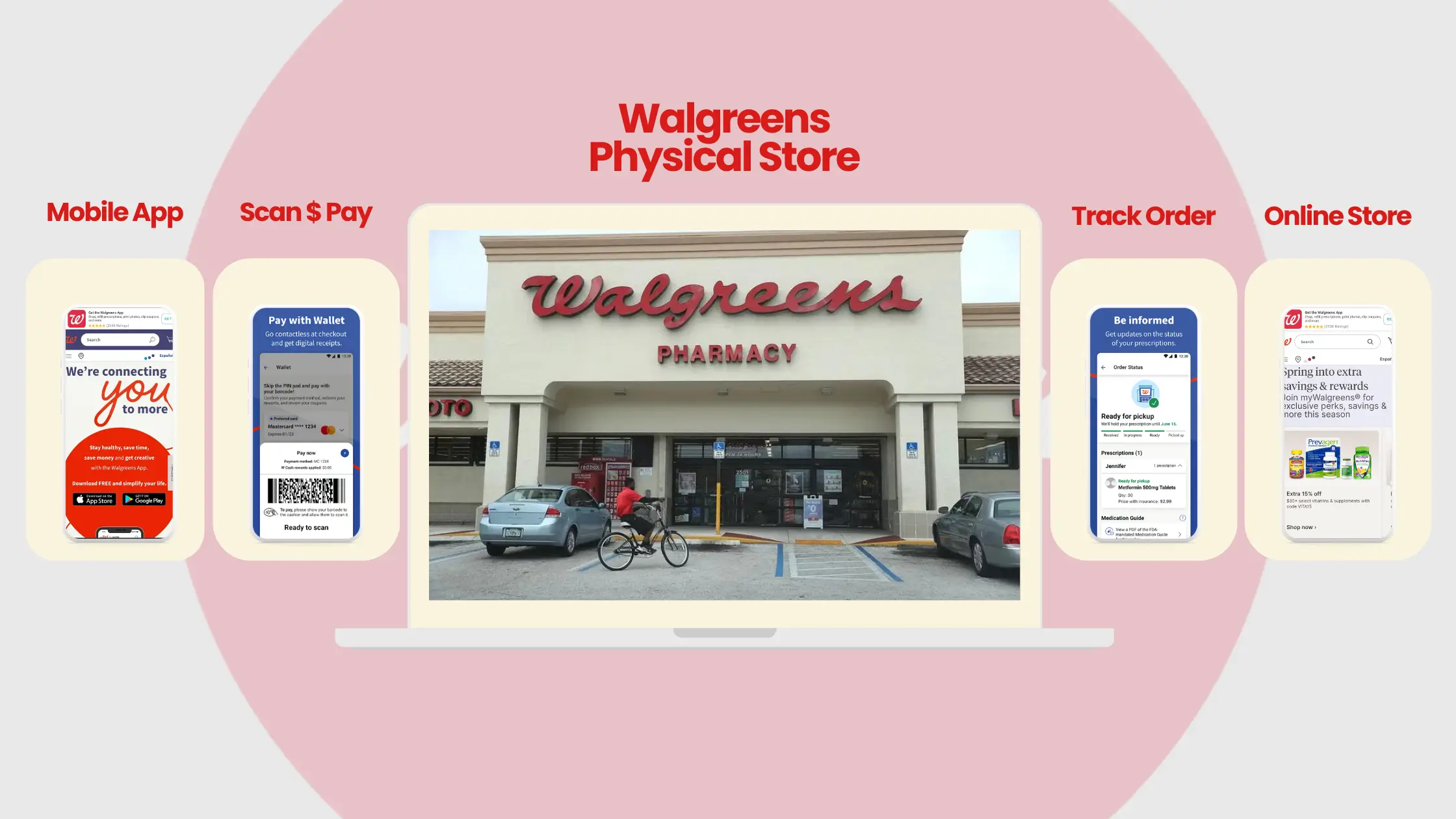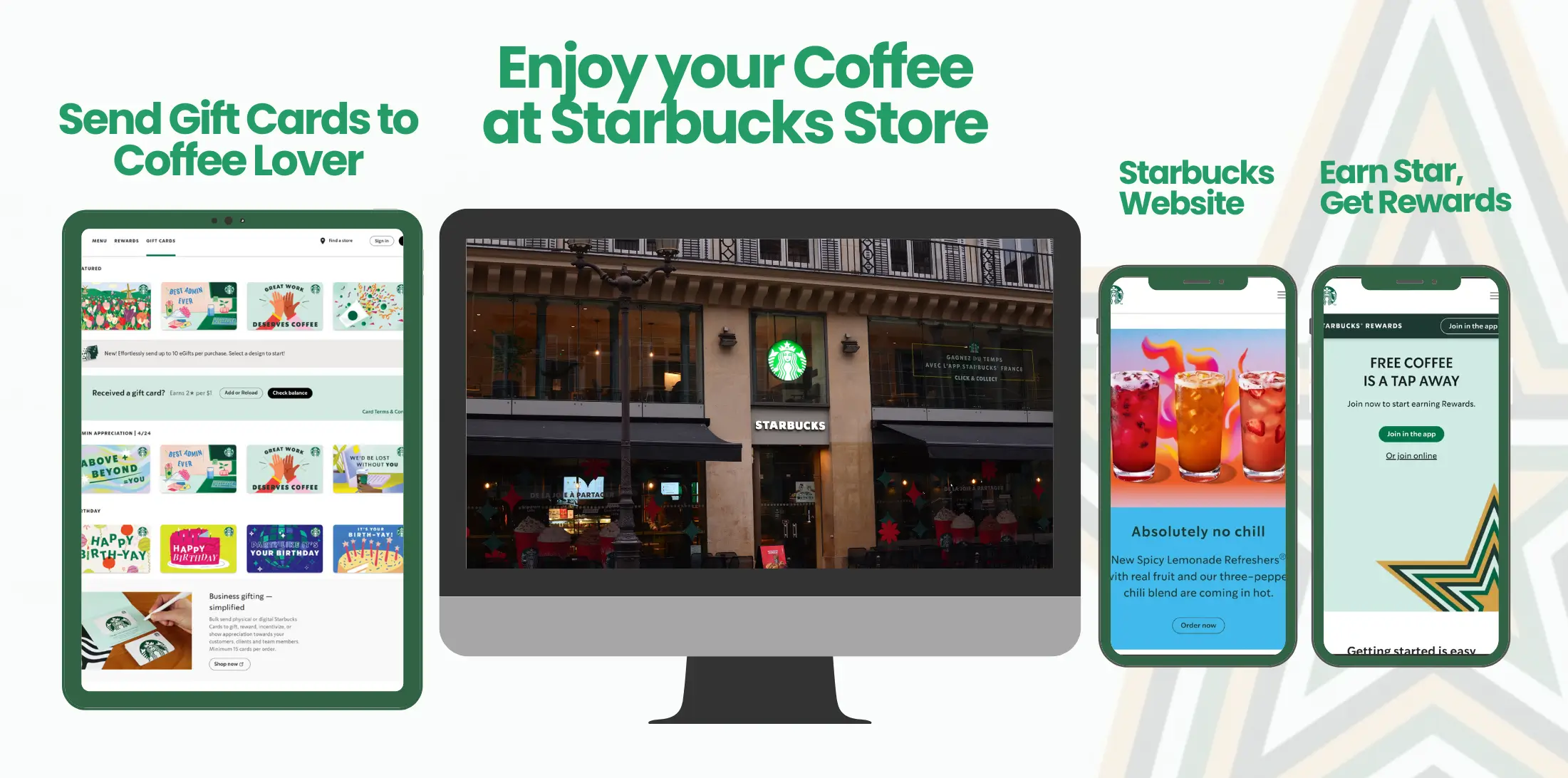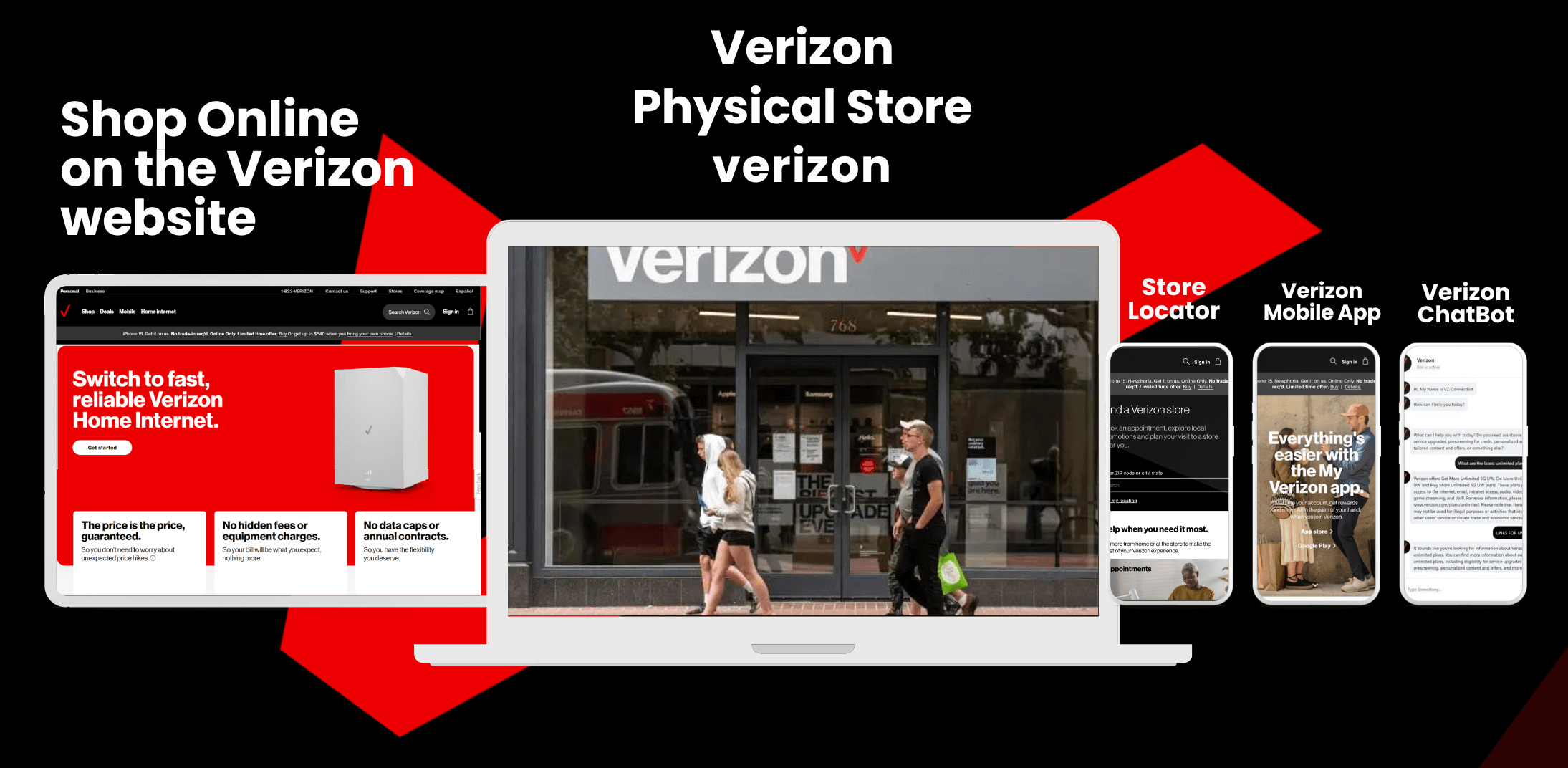
In today’s digital world, eCommerce businesses are no longer limited to a single channel. Customers want to be able to shop across multiple channels, which include physical stores, websites, mobile apps, and social media platforms. This is where omnichannel Commerce comes in.
According to Harvard Business Review, 73% of online shoppers use several channels when shopping online. This is why businesses must offer a consistent, seamless customer experience across different touchpoints of a customer journey.
What is an Omnichannel Commerce?
Omnichannel Commerce is a sales strategy that utilizes multiple channels to deliver a unified customer experience across online, mobile, social media, and in-store channels. It addresses the need for businesses to offer a seamless shopping experience across multiple channels, regardless of where the customer is in the buyer funnel.
What Is The Difference Between Omnichannel and Multichannel?
The significant distinction between omnichannel and multichannel is that the former provides a seamless experience across channels, while the latter offers a disconnected experience. In a multichannel approach, each channel operates independently, causing inconsistencies in the customer experience. For example, a customer may find a product on the website but can’t purchase it in-store.
On the other hand, an omnichannel approach integrates all channels and provides a consistent shopping experience. A customer can browse products on the website, add them to the cart on the mobile app, and purchase them in-store without any hassle.
Benefits Of Omnichannel Commerce
Many business owners question whether investing in omnichannel Commerce is worthwhile. Yes, absolutely! Here are a few reasons why:
- Better Customer Experience: According to CX, today 9 out of 10 customers want an omnichannel experience. With the number of customer touchpoints increasing, seamless integration on each of them becomes even more critical. Your consumer will feel like shopping with you is a breeze when you break down the walls between different channels.
- More sales and traffic: Adopting an omnichannel sales strategy can be challenging, but it can significantly increase your sales and traffic. According to a study by Harvard Business Review done over 46000 shoppers, omnichannel customers spend 4% more in-store and 10% more online than single-channel customers. In addition, customers who use four or more channels to shop spend an average of 9% more in-store than those who use just one channel.
- Personalized experience: In an omnichannel eCommerce strategy, your branding and messaging should be consistent across channels and reflect where the customers are in the buying cycle. By providing a personalized experience, you increase the chances of the customers completing the order.
- Understanding customer journey: Omnichannel eCommerce allows your company to collect and collate customer data from several channels. When you have all of this data in a single place, you will understand the kind of customers who like what you offer. It will give you a sneak peek into their behavior and put you in a position where you can personalize their journey.
- Boost customer loyalty: According to Think Impact, existing customers tend to spend about 67% more than new customers. Using omnichannel sales techniques allows for personalized shopping experiences but also enhances customer loyalty, potentially increasing revenue and customer retention by 10-15%, as noted in McKinsey's Retail Speaks report. The report also indicates that customers are 5-10% more satisfied and engaged when their shopping experiences are personalized across all interactions. When customers are satisfied, they are more likely to remain loyal, leading to increased profitability for businesses.
Successful Omnichannel Commerce Strategies
While developing a strong omnichannel commerce strategy requires a deep understanding of the brand, some tried-and-true methods can significantly increase the likelihood of success. These innovative actions include:
- Choosing the right channels: Selecting the proper channels is essential for an effective omnichannel strategy. By using analytics, you can determine which channels are the most profitable, efficient, and effective in acquiring new customers and which channel needs additional effort or optimization to meet performance benchmarks.
It is critical to monitor touchpoints that effectively accommodate the preferences and requirements of customers while simultaneously creating strategies to enhance touchpoints that are not performing as expected.
- Establishing clear channel purposes: To avoid confusion and provide a consistent experience, it's important to designate one channel for customer engagement while keeping other channels available for updates and information dissemination. This ensures that customers know where to go for personalized interactions and where to find general updates.
- Consolidating channels:Implementing technology that seamlessly follows customers throughout their buying journey is crucial. This means deploying tools and systems that allow customers to transition smoothly between channels, from reading reviews and seeing social ads to making purchases at physical stores. This consolidation creates a unified and convenient experience for customers.
- Thorough follow-through: To encourage customers to complete their purchases, it's essential to implement abandoned cart programs that remind and incentivize them to return and finish their transactions, regardless of the channel they started on.
Additionally, automated follow-up messages can be sent to thank customers for their purchases and sometimes offer discounts for future purchases, fostering loyalty and encouraging repeat business.
- Maintaining the channels: It's crucial to continuously test and optimize your channels to ensure they are performing at their best. This involves conducting regular testing, analyzing qualitative and quantitative data, and making measured decisions about your most important channels. You can make informed decisions and provide a seamless and satisfying customer experience by monitoring and improving channel performance.
Omnichannel Commerce Challenges
Omnichannel Commerce, though incredibly beneficial, also has its own set of issues businesses must be aware of and prepared to address. Let’s explore these challenges in more detail.
- Complex data management: Omnichannel commerce generates a vast amount of data from various channels such as online stores, mobile apps, social media, and physical stores. Each channel produces its own set of data, including customer interactions, purchase history, and preferences.
Collecting, integrating, and analyzing this data to gain valuable insights can be a complex task. It requires businesses to have robust data management systems and analytics capabilities in place to effectively utilize the data for decision-making and optimizing their omnichannel strategy.
- Maintaining consistent brand experience: Another challenge is keeping a consistent brand experience across all channels. Customers expect a cohesive brand identity, regardless of the channel they interact with. This contains consistent branding features, such as logos, colors, fonts, and messaging.
Any discrepancies or inconsistencies in branding can confuse customers and undermine the overall omnichannel experience. Businesses should ensure that their brand is reflected consistently across all touchpoints to reinforce brand recognition and trust.
- Costly implementation and maintenance: Implementing and maintaining an effective omnichannel commerce strategy can be an expensive endeavor. Investments in technology, infrastructure, and personnel are required to manage multiple channels and deliver a seamless customer experience.
Integrating various systems, training employees, and managing inventory across channels can incur significant costs. Businesses need to carefully assess the financial implications and allocate resources accordingly to ensure the success of their omnichannel initiatives.
- Keeping up with technology trends: The landscape of e-commerce and technology is constantly evolving. New technologies, platforms, and trends emerge regularly, and businesses engaged in omnichannel Commerce must stay updated to remain competitive.
Failing to embrace new technologies and trends can result in a subpar customer experience and a loss of market share. Businesses need to continuously monitor the market, assess emerging technologies, and adapt their omnichannel strategy to meet evolving customer expectations.
- Adapt to changing trends: In the retail industry, businesses need to stay up-to-date with the industry trends. Omnichannel Commerce is an effective way for businesses to remain flexible and adaptable to customer preferences, whether they shop in-store, online, or through applications.
Through this approach, companies may stay up to date with current trends and ensure customer satisfaction. Adopting an omnichannel strategy can help businesses maintain a competitive edge and retain loyal customers who keep coming back for more.

Omnichannel Commerce Solutions Include
Omnichannel commerce solutions encompass a diverse range of tools and platforms that empower businesses to deliver a seamless customer experience across multiple channels. These solutions include:
- E-commerce platforms: E-commerce platforms serve as the backbone of online sales, enabling businesses to create and manage online stores, process payments, and fulfill orders. By integrating e-commerce platforms with other channels, companies can ensure consistent product information, pricing, and promotions across all touchpoints.
- Mobile apps: Mobile apps extend the reach of businesses beyond the confines of physical stores and desktops. With the proliferation of smartphones, companies can tap into a vast mobile audience by developing user-friendly apps that offer seamless shopping experiences.
Mobile apps can provide features such as product browsing, order tracking, loyalty programs, and personalized notifications, enhancing customer engagement and loyalty.
- Social media: Social media platforms have grown from simple communication channels to vital e-commerce tools. Businesses can engage in real-time communication with clients, offer customer service, and even boost sales by utilizing social media.
Social media platforms provide various services such as shoppable posts, direct messaging, and influencer marketing, empowering businesses to reach a wider audience and drive conversions.
- Physical stores: Physical stores remain an integral part of omnichannel Commerce, providing customers with a tangible shopping experience. However, physical stores must be integrated with other channels to create a cohesive omnichannel experience. This can be achieved by offering click-and-collect services, in-store kiosks for online ordering, and mobile apps that enhance the in-store experience.
- Cloud-based software: Cloud-based software solutions provide the infrastructure and tools to manage and integrate various aspects of omnichannel Commerce, such as inventory management, order fulfillment, customer relationship management (CRM), and data analytics.
By leveraging cloud-based software, businesses can gain real-time visibility into their operations, optimize processes, and deliver a consistent customer experience across all channels.
Business Examples Of Companies Providing Omnichannel eCommerce
Let us look at some real-life examples of how e-commerce companies implement omnichannel strategies for their customers.

- Walgreens: The retail pharmaceutical giant has a mobile app. Customers can manage their pharmacy prescriptions, find deals, make orders, and pick them up at the nearest location.
- Apple: Apple offers devices that seamlessly sync with each other using customers' iCloud accounts. Messages, photos, and connected devices display the same way no matter which Apple device the customer uses. When a customer sets up their new device and signs in using their iCloud account, all the relevant information is downloaded to the new device.
- Starbucks: The coffee behemoth is also known for its omnichannel strategy. When a Starbucks customer pays with a Starbucks card, they will accumulate reward points. Their linked app allows coffee lovers to send gifts, find nearby stores, and order drinks in advance.
- Best Buy: The leading electronics retailer app provides an omnichannel experience. It is easy to navigate and has a nice flow. You can checkout with curbside pickup or add the products to the cart. The customer can locate the product at a different store and get it shipped to the designated MyStore.
- Verizon: You can manage and order existing and new devices in their mobile app, chat with support agents, make changes to your account, and get the best deals and offers available. When you open the app, you first see "Hi, (your name)," a classic example of good personalization.
- Target: They integrated with Pinterest Lens, which allows people to use their smartphones to take a picture of something they like and see if the Target app has a similar product available. It offers a seamless experience for customers who see something they want and can immediately check if it is available on Target.
Future of Omnichannel Commerce
The future of omnichannel retail will be all about convenience, physical experiences, personalization, and efficiency. Here are some of our predictions about omnichannel Commerce's future:
- Since the number of options for consumers has increased, it will all be about offering convenience. How quickly will the product arrive? How easy is it to order products? How do the products appear on the website or at the physical store?
- Consumers will want blended experiences. Videos, screen shares, virtual reality viewing, and so on will be some of the expectations.
- They want product recommendations just for themselves.
- The younger generation these days is particular about what the business they buy from represents. They care about society and how the products they buy impact the environment, diversity, culture, and future generations. E-commerce companies might have to put some thought into this when creating products.
- Immersive 3D digital stores might be something that the future has in store for us.
- Transformative technologies such as smart sensors, artificial intelligence, cloud computing, green technology, sustainable energy, and nanotechnology will shape omnichannel e-commerce.
Omnichannel eCommerce’s future is not only about providing its customers with several channels to buy from, but it is also about ensuring that their experience is uniformly consistent everywhere.
Wrapping up
Adapting to the latest eCommerce trends is not easy. There are a gazillion things to be updated about. Today, eCommerce retailers across the world are trying to implement omnichannel eCommerce. It is well worth the effort and time invested in shifting to an omnichannel experience. Do you have the necessary wherewithal and expertise to offer an omnichannel experience for your customers? If not, you should find ways to add it to your tech stack.
Even though implementing an omnichannel experience for your customers is a must-do these days, it can be challenging to manage it alone. 99minds is here to help you create an omnichannel experience for your customers with the help of its plug-and-play software that can create loyalty programs, digital gift cards, discounts, referrals, etc.




.webp)

.png)

.png)